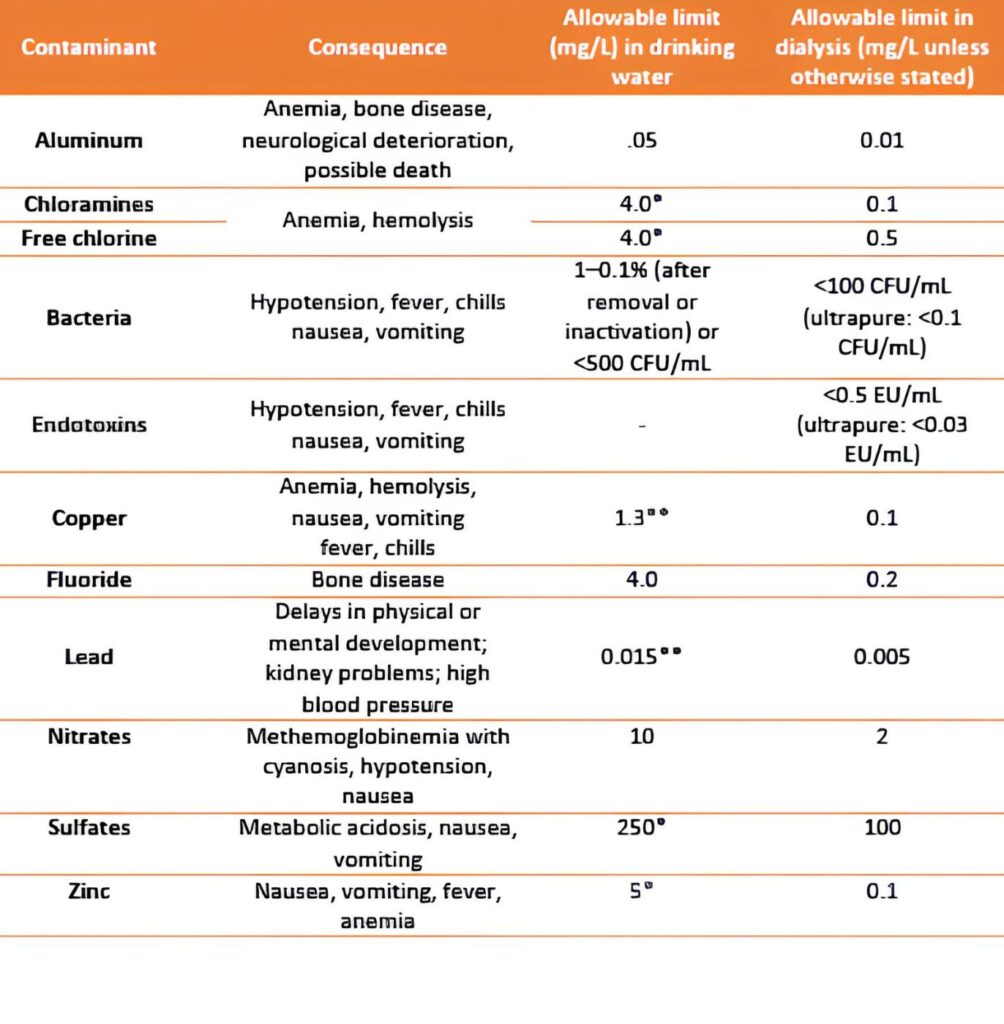Home» Water Analysis» Water for Hemodialysis
Water for Hemodialysis
Chemical and microbial components that can be found in drinking water may have the potential to produce significant negative effects in patients undergoing hemodialysis. It is, therefore, necessary to subject the water to further treatment to reduce these components to acceptable levels. The Water for Hemodialysis monograph in USP provides bacterial and chemical tests that are required to ensure patient safety.
Additional testing is recommended as follows:

In addition to the above, the water for Hemodialysis must also meet microbial requirement as follows:
Microbial Parameter | Limit |
Total aerobic microbial count (TAMC) | 100 cfu/mL |
Endotoxin | 1 USP Endotoxin Unit/mL |
Further, the the dialysate itself is required to be free of contaminants as per USP.
Contaminant | Limit |
Calcium | 2 (0.1 mEq/L) |
Magnesium | 4 (0.3 mEq/L) |
Potassium | 8 (0.2 mEq/L) |
Sodium | 70 (3.0 mEq/L) |
Other contaminants | |
Antimony | 0.006 |
Arsenic | 0.005 |
Barium | 0.1 |
Beryllium | 0.0004 |
Cadmium | 0.001 |
Chromium | 0.014 |
Mercury | 0.0002 |
Selenium | 0.09 |
Silver | 0.005 |
Thallium | 0.002 |
The USP limits are in line with the water standards for hemodialysis established by the American National Standards Institute/Association for the Advancement of Medical Instrumentation (ANSI/AAMI).
CLL’s Water Related services:
- Water Borne Diseases & their testing
- Drinking Water Testing Services
- Wastewater Treatment & Monitoring
- Water for Bathing purpose
- Outfall water testing
- River water surveys
- Recreational Water Testing
- Agricultural Use Water
- Water for Construction purpose
- Water for Food processing industries
- Water for Pharmaceutical Industry
- Water for Hemodialysis
- Water for Injection
- Water for fisheries
